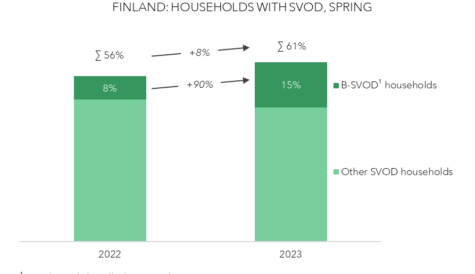
After more than 40 years of operation, DTVE is closing its doors and our website will no longer be updated daily. Thank you for all of your support.
Digital TV CEE: Netflix unlikely to progress in CEE
Netflix is unlikely to make significant headway in most markets in central and Eastern Europe without making significant and probably uneconomic investments in local content, according to a line-up of speakers at the Digital TV CEE conference in Budapest.
Despite the global SVOD player’s decision to localise its service in Poland, there is still a lot of scepticism about the viability of the service in other, smaller markets in the region.
Speaking on a panel at the event, Nikola Francetic, head of group content, media and broadcasting, Telekom Austria Group, said that local players would be “slaughtered” if they came to market with an undifferentiated product. Of Netflix, he said: “They’re a great company but in the short term I don’t think they are going to be very successful.”
Telekom Austria is launching its own OTT services in three markets across Europe this year. The operator will makes services commercially available in Croatia, Slovenia and Macedonia, having already soft-launched in two of those territories.
Francetic said that OTT is “a great way to expand our TV business, which is not as big as our mobile base, and extend TV to our mobile base and also to outside that.”
He said that even older viewers are now using OTT to view catch-up content. “These people want a nice product they don’t have to think about too much.”
Francetic said that Telekom Austria had recently been in discussions with channel providers and studios and found that they placed value in what operators like Telekom Austria can provide. “They think there is a danger that things will become too segmented. They want an operator to provide a good a basic offering, and if they need to go really niche they can go to some kind of specialised app or operator,” he said. Having an “established relationship” with a customer still provided a key advantage, he added.
Also speaking on the panel session, Luana Alexe, senior product and service development manager at Deutsche Telekom-owned Slovak Telekom, said that her company had started with an OTT service offered as a value-add but realised that it made more sense to have a standalone service. The company currently offers OTT as a separate offering with exclusive content targeted at customer groups that would be less interested in subscribing to a classic pay TV service.
“It is about exclusivity and also about offering access and a good user experience,” she said, adding that the main challenge was how to make OTT profitable. “The most interesting target segment is the millennials but they are also the most piracy-savvy. To get them you need to design a product with them in mind.”
Alexe said that Netflix has a good brand awareness but not launching with a localised version in CEE markets meant that customers were disappointed. “The key [issue] for them is localisation, but also pricing and piracy,” she said.
She claimed that Netflix came with a great user experience that fitted all needs. However, she said it is challenging to create a single multinational service when it comes to catch-up TV.
A third panelist, Laima Zivatkauskaite, vice-president of Lithuanian cable operator Init, said that Netflix has only achieved 2% reach in Lithuania so far. She said that for Netflix to localise in a small market like Lithuania would probably not be viable, leaving a space for local players.
Zivatkauskaite said that Modern Times Group’s SVOD service Viaplay, which also launched recently in Lithuania, had also experienced little success in the market so far. She said that piracy is a key challenge facing standalone SVOD offerings. “People are not willing to pay for anything,” she said.
Init is meanwhile launching its own OTT offering targeted at delivering non-linear content to its existing user base initially. “People want catch up TV and this is why we are launching our service,” she said.



